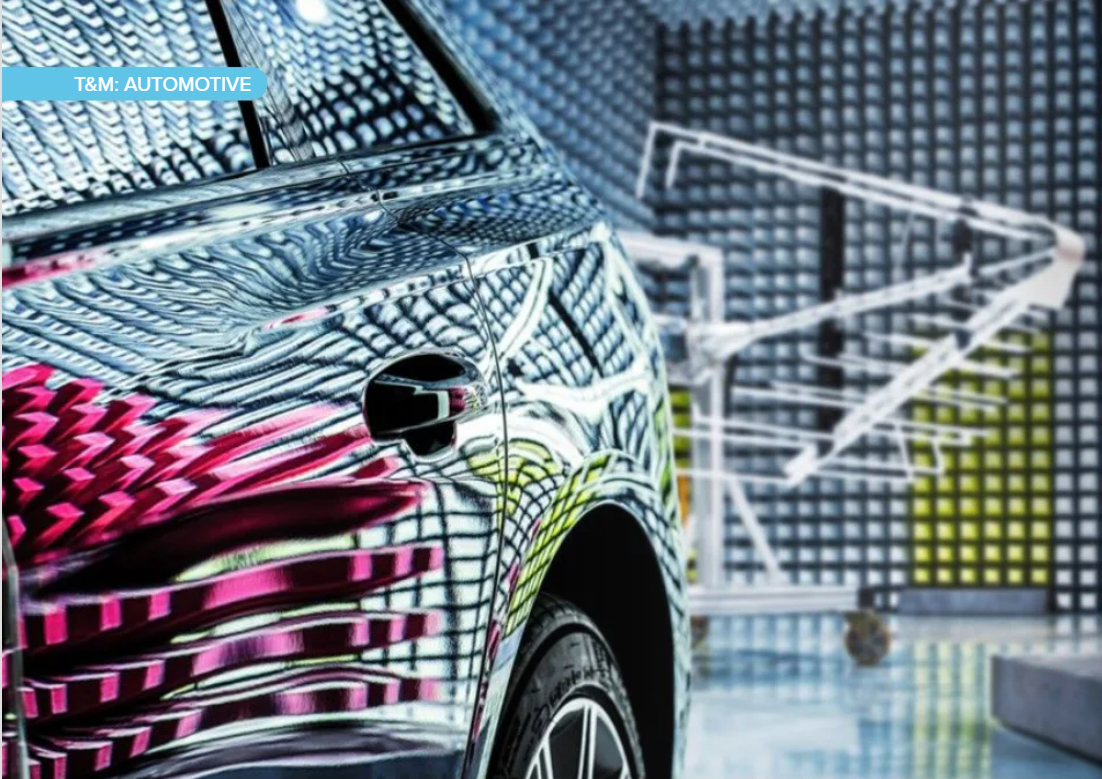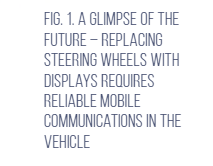Connected cars are coming
Both established automotive manufacturers and industry upstarts are moving forward with autonomous vehicles.
This article originally appeared in the Aug'23 magazine issue of Electronic Specifier Design – see ES's Magazine Archives for more featured publications.
By Holger Rosier, Technology Manager, Rohde & Schwarz
In addition to sophisticated sensors, fully connected vehicles are vital to autonomous driving. OEMs and suppliers around the world are relying on the C-V2X standard. Radio communication testers from Rohde & Schwarz have all the necessary functions for C-V2X testing – including 5G test case simulations. Shanghai at rush hour. Want to merge? The name of the game here is honk and drive. If someone cuts you off, honk back. Want to reverse in the middle of an intersection to change direction? It happens. With any luck, you can avoid crashing into one of the countless e-scooters silently slithering through the gaps in traffic. Electric mopeds and small electric vans shamelessly drive on sidewalks. “The streets are just too dangerous,” says Munich based consultant and Shanghai University of Finance and Economics (SUFE) graduate Julian Schneider.
Making a virtue of a traffic necessity
Chinese startups are pioneers in the future of automotive travel. The traffic chaos in Chinese megacities plays right into their hands. James Peng thinks these companies face especially tough challenges in China. He is CEO of Pony.ai, a robotaxi startup founded in 2016 and an industry giant with a market value of 8.5 billion dollars. He believes experience with unpredictable local Chinese roads is more valuable and the data will be more relevant than the results from the USA, for example. Pony.ai already has a fleet of 100 robotaxis in the southern Chinese city of Guangzhou covering an area of 800 square kilometers. This is another step in the commercialisation of autonomous driving in China. Industry experts predict a global mass-market breakthrough by 2025. China is the biggest potential market. Millions of robotaxis are expected to be navigating Chinese roads by 2030. Pony.ai will have to share the market with strong, local competitors like Baidu, AutoX, and DiDi Xungking. These companies have also been running tests and working hard to refine their driver assistance systems.
US startups compete with the European automotive Industry
The USA is once again at the vanguard of connected autonomous vehicles (CAV). A favourable regulatory environment was created early on, particularly in California. Google’s sister company Waymo racked up valuable test miles before the international competition and is still considered the benchmark for autonomous driving. Other companies have now also recognised the potential of California as a testing ground and are following suit.
The situation is very different in Europe. While the USA and China rely on the speed and agility of their startups, Europe is combining the efforts of their automotive industry and major IT firms. Some local projects provide automatic shuttles and people movers for the first and last mile of public transportation. Even though the pioneers come from different regions, Germany passed the first comprehensive law on autonomous driving up to Level 4 in July 2021, allowing fleets of robotaxis to operate on German roads.
The role of C-ITS, V2X and 5G
Autonomy Level 5 is often mentioned and designates driver assistance systems that are sophisticated enough to pilot a vehicle completely on their own (with full autonomy) and are safer than human drivers. However, Level 5 is just a way station. Looking at the bigger picture, the ultimate goal is cooperative intelligent transport systems (C-ITS) that cover all forms of transportation and use technology to maximise road safety and efficiency.
A wave of green lights would no longer be a rarity with connected traffic. C-ITS would also effectively prevent secondary accidents because a vehicle in front will tell other road users behind immediately when it starts emergency braking. Platooning is also a great opportunity for freight forwarders to save fuel. Once laws are amended to require only the lead vehicle in a platoon to have a safety driver, the technology would become even more attractive. But there is still a long way to go.
Connected transportation will only become a reality once vehicles communicate with each other, surrounding infrastructure and traffic control centres. This principle is called vehicle-to-everything (V2X) communications. It includes vehicle-to-vehicle (V2V), vehicle-to-infrastructure (V2I) and vehicle-to-pedestrian (V2P) communications.
5G provides an important technical foundation for V2X communications. This is no coincidence since the automotive industry has been involved in the standardisation process from the very start to make sure that 5G meets all its needs. It is the ideal standard for traffic connectivity.
5G has all the necessary features including a high transmission rate, availability, reliability, and short signal delays (latency).
But cellular networks (C-V2X) – radiocommunications via intermediary base stations – can only cover a part of the communications demands. In dead spots or ad hoc situations, vehicles need to communicate directly. And that is where sidelink (PC5) interfaces come in. These have been around since LTE (4G). Independent of the situation at hand, V2X communications either flow over the cellular network or the PC5 sidelink.
New standards, new test cases
To make these visionary plans a reality, next generation vehicles must be 5G-ready. The automotive industry already has experience with cellular telematics in its mandatory emergency eCall system. However, compared to existing standards, 5G is much more demanding with a host of entirely new testing challenges for both car makers and suppliers.
Rohde & Schwarz has a range of specialist measuring instruments for developers and system integrators, giving them everything they need to efficiently integrate a wide variety of wireless technologies, including mobile communications but also Bluetooth, WLAN, and GNSS. Radio communication testers such as the R&S CMX500 can simulate wireless networks with all their functions, measure and evaluate user equipment performance and allow customers to test any 5G application in the lab.
Telematic units and entire vehicles can face any kind of traffic situation, including those that do not yet exist. Being able to run such tests is hugely important for C-ITS development, because systems will need automatic processes that cover an enormous range of traffic situations. And if collecting real-world test data for a given scenario is not possible or feasible because of excessive costs, it can be simulated in a lab.
Vehicle air interfaces (antennas) are given special attention. Turnkey measuring systems automate the necessary tests and relieve manufacturers of time-consuming and error-prone full vehicle antenna testing (FVAT) procedures.









